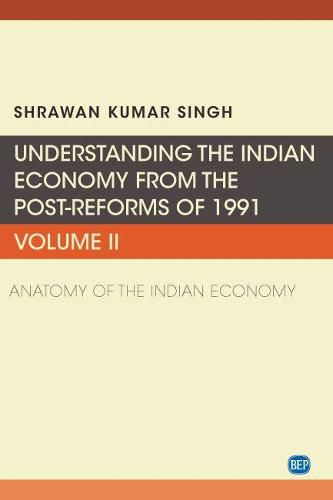Readings Newsletter
Become a Readings Member to make your shopping experience even easier.
Sign in or sign up for free!
You’re not far away from qualifying for FREE standard shipping within Australia
You’ve qualified for FREE standard shipping within Australia
The cart is loading…






This title is printed to order. This book may have been self-published. If so, we cannot guarantee the quality of the content. In the main most books will have gone through the editing process however some may not. We therefore suggest that you be aware of this before ordering this book. If in doubt check either the author or publisher’s details as we are unable to accept any returns unless they are faulty. Please contact us if you have any questions.
India evokes many images because the country is extremely heterogeneous in its resource endowments, climate, languages, and infrastructure. India provides a rich tapestry of economic and social milieu: the 22 officially recognized languages spoken by the population, with their many dialects; the caste system; and its hoary history with its rich culture and traditions.
India possesses a wide and varied resource base, although domestic sources supply only a third of the country’s oil requirements at present. India’s economic performance has attracted considerable commentary and controversy. Since 1950, India’s approach to economic development has been within the framework of a mixed economy, which has resulted from both pragmatic and political considerations.
The objective of this book is to provide an understanding of the economy with its nature and structure, dominance of unorganized sector, natural resources, economic and social infrastructure, demographic features, poverty, unemployment, inequality, national income, saving and investment, role of noneconomic factors, and sources of data. Despite being a part of the eight-volume series on the Indian economy, this second volume in the series is in the nature of an introductory essay designed to provide a succinct nontechnical exposition of India’s economic structure, performance, and policies.
$9.00 standard shipping within Australia
FREE standard shipping within Australia for orders over $100.00
Express & International shipping calculated at checkout
This title is printed to order. This book may have been self-published. If so, we cannot guarantee the quality of the content. In the main most books will have gone through the editing process however some may not. We therefore suggest that you be aware of this before ordering this book. If in doubt check either the author or publisher’s details as we are unable to accept any returns unless they are faulty. Please contact us if you have any questions.
India evokes many images because the country is extremely heterogeneous in its resource endowments, climate, languages, and infrastructure. India provides a rich tapestry of economic and social milieu: the 22 officially recognized languages spoken by the population, with their many dialects; the caste system; and its hoary history with its rich culture and traditions.
India possesses a wide and varied resource base, although domestic sources supply only a third of the country’s oil requirements at present. India’s economic performance has attracted considerable commentary and controversy. Since 1950, India’s approach to economic development has been within the framework of a mixed economy, which has resulted from both pragmatic and political considerations.
The objective of this book is to provide an understanding of the economy with its nature and structure, dominance of unorganized sector, natural resources, economic and social infrastructure, demographic features, poverty, unemployment, inequality, national income, saving and investment, role of noneconomic factors, and sources of data. Despite being a part of the eight-volume series on the Indian economy, this second volume in the series is in the nature of an introductory essay designed to provide a succinct nontechnical exposition of India’s economic structure, performance, and policies.